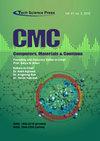Sum Rate Maximization-based Fair Power Allocation in Downlink NOMA Networks
IF 1.7
4区 计算机科学
Q3 COMPUTER SCIENCE, INFORMATION SYSTEMS
引用次数: 0
Abstract
: Non-orthogonal multiple access (NOMA) has been seen as a promising technology for 5G communication. The performance optimization of NOMA systems depends on both power allocation (PA) and user pairing (UP). Most existing researches provide sub-optimal solutions with high computational complexity for PA problem and mainly focuses on maximizing the sum rate (capacity) without considering the fairness performance. Also, the joint optimization of PA and UP needs an exhaustive search. The main contribution of this paper is the proposing of a novel capacity maximization-based fair power allocation (CMFPA) with low-complexity in downlink NOMA. Extensive investigation and analysis of the joint impact of signal to noise ratio (SNR) per subcarrier and the channel gains of the paired users on the performance of NOMA in terms of the capacity and the user fairness is presented. Next, a closed-form equation for the power allocation coefficient of CMFPA as a function of SNR, and the channel gains of the paired users is provided. In addition, to jointly optimize UP and PA in NOMA systems an efficient low-complexity UP (ELCUP) method is proposed to be incorporated with the proposed CMFPA to compromise the proposed joint resource allocation (JRA). Simulation results demonstrate that the proposed CMFPA can improve the capacity and fairness performance of existing UP methods, such as conventional UP, and random UP methods. Furthermore, the simulation results show that the proposed JRA significantly outperforms the existing schemes and gives a near-optimal performance.基于求和速率最大化的下行NOMA网络公平功率分配
非正交多址(NOMA)已被视为5G通信的一项有前途的技术。NOMA系统的性能优化取决于功率分配(PA)和用户配对(UP)。现有研究大多针对PA问题提供了计算复杂度较高的次优解,且主要关注求和速率(容量)的最大化,没有考虑公平性性能。同时,PA和UP的联合优化需要穷举搜索。本文的主要贡献是提出了一种新的基于容量最大化的低复杂度的下行NOMA公平功率分配(CMFPA)。从容量和用户公平性两个方面,对子载波信噪比(SNR)和信道增益对NOMA性能的共同影响进行了广泛的研究和分析。其次,给出了CMFPA功率分配系数随信噪比的函数和配对用户信道增益的封闭方程。此外,为了在NOMA系统中对UP和PA进行联合优化,提出了一种高效的低复杂度UP (ELCUP)方法,并将其与CMFPA相结合,以折衷joint resource allocation (JRA)方法。仿真结果表明,与传统UP方法和随机UP方法相比,CMFPA可以提高容量和公平性。此外,仿真结果表明,所提出的JRA方案明显优于现有方案,具有接近最优的性能。
本文章由计算机程序翻译,如有差异,请以英文原文为准。
求助全文
约1分钟内获得全文
求助全文
来源期刊

Cmc-computers Materials & Continua
工程技术-材料科学:综合
CiteScore
5.30
自引率
19.40%
发文量
345
审稿时长
1 months
期刊介绍:
This journal publishes original research papers in the areas of computer networks, artificial intelligence, big data management, software engineering, multimedia, cyber security, internet of things, materials genome, integrated materials science, data analysis, modeling, and engineering of designing and manufacturing of modern functional and multifunctional materials.
Novel high performance computing methods, big data analysis, and artificial intelligence that advance material technologies are especially welcome.
 求助内容:
求助内容: 应助结果提醒方式:
应助结果提醒方式:


